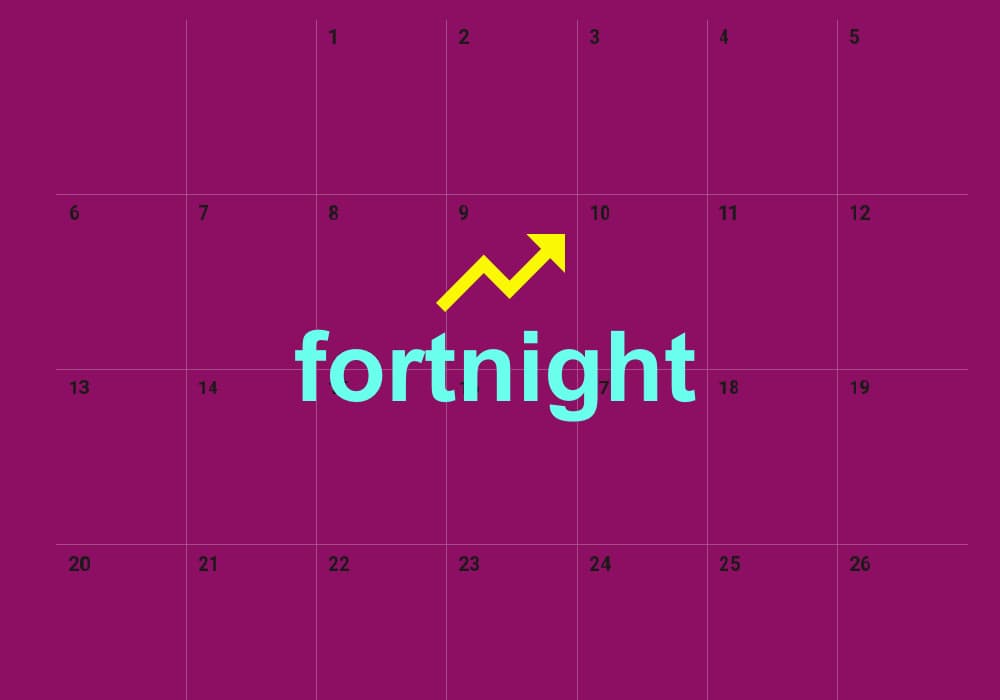Uncover the historical roots and contemporary relevance of the term “fortnight,” spanning fourteen days in British and Commonwealth English.
A fortnight, derived from Old English, spans fourteen consecutive days, which equates to two weeks. British and Commonwealth English frequently employ this temporal unit to specify a duration or timeframe.
This article delves into the intricacies of the fortnight, exploring its etymology, global variations, and contemporary usage.
Etymology And Historical Context – Explore Its History And How People Have Used It Over Time!
The term “fortnight” etymology offers a fascinating glimpse into the historical context of temporal measurement. Originating from Old English roots, the word “fortnight” is a contraction of “feowertiene niht,” which translates to “fourteen nights.”
Its emergence can be traced back to medieval England when standardized timekeeping was not established.
In agrarian societies of the era, where activities were closely tied to seasonal changes, a fortnight provided a practical means of organizing time.
During medieval times, the division of time into fortnights held immense significance in various aspects of daily life. Agricultural communities relied on these two-week cycles for planning planting and harvesting, aligning their activities with natural rhythms.
Similarly, merchants and traders utilized fortnights to schedule transactions and journeys, ensuring efficient coordination without modern communication.
Thus, the fortnight served as a fundamental temporal unit, guiding the rhythms of medieval society and reflecting the intricate interplay between human activities and the passage of time.
Duration And Variations – Significance Of This Timeless Temporal Concept!

1. Traditional Duration Of A Fortnight:
- The conventional duration of a fortnight spans fourteen days or two weeks.
- It is a convenient temporal unit for planning and organizing activities, especially in agricultural societies and historical contexts.
2. Cultural Variations In Time Perception:
- Cultural variations influence the perception and measurement of time across different regions.
- Alternative measures and terms prevail in parts of Africa and Asia, reflecting diverse cultural perspectives on temporal divisions.
3. Alternative Measures In Different Cultures:
- Certain African cultures rely on lunar cycles or specific cultural events rather than fixed fortnightly intervals to dictate temporal divisions.
- Similarly, in parts of Asia, lunar calendars or religious observances shape temporal concepts, leading to variations in time perception compared to Western norms.
4. Richness And Diversity Of Human Experiences:
- These cultural variations highlight the richness and diversity of human experiences in conceptualizing and organizing time.
- They showcase how societies adapt and navigate temporal complexities according to their unique cultural frameworks.
5. Universal Principle Of Time Management:
- Despite cultural differences, dividing time into manageable units for practical purposes remains universal.
- This demonstrates the adaptability of human societies in navigating temporal complexities while accommodating cultural diversity.
Cultural Significance – Embrace Its Significance With Us Today!

The fortnight holds profound cultural significance, serving as more than a temporal measure. Across diverse societies, it symbolizes a rhythm of life, marking transitions, rituals, and communal events.
In literature and folklore, references to the fortnight abound, often portraying it as a time of change or reflection.
From Shakespearean plays to ancient myths, the fortnight emerges as a narrative device, encapsulating the fleeting nature of time and the passage of seasons.
Moreover, the fortnight plays a pivotal role in social customs and traditions. In many cultures, rituals and celebrations are organized around this two-week interval, emphasizing its importance in communal life.
Whether it’s the fortnightly gatherings of extended families or the alternating cycles of work and rest, the fortnight shapes societal rhythms and fosters a sense of belonging and continuity.
Furthermore, the significance of the fortnight extends beyond mere practicality, resonating with deeper cultural meanings. It embodies notions of cyclical time, reflecting the recurring patterns of nature and human existence.
As communities gather for fortnightly rituals or observe traditions spanning multiple fortnights, they reaffirm their connection to the past, present, and future, reinforcing shared values and identity.
In this way, the fortnight serves as a cultural anchor, grounding individuals and communities amidst the flux of modern life.
Contemporary Usage – Join Us To See How It’s A Part Of Everyday Life!

1. Colloquial Language:
In everyday speech, particularly in regions where British and Commonwealth English prevails, the term “fortnight” continues to be used colloquially to denote two weekser in casual conversations among friends or in informal emails and texts, individuals find the fortnight to be a niente and widely understood unit of time measurement.
2. Practical Application In Business And Finance:
Despite the prevalence of digital calendars and more precise timekeeping systems, the fortnight maintains relevance in various business and financial contexts.
For instance, businesses often adhere to fortnightly schedules for payroll processing, budget reviews, and particular project timelines. This structured approach facilitates efficient planning and resource allocation within organizations.
3. Educational Institutions:
Within education, the fortnight remains a practical temporal unit. Many educational institutions structure their academic calendars around fortnightly intervals, organizing classes, assessments, and other scholarly activities accordingly.
This approach provides a cohesive framework for educators and students, allowing for effective planning and pacing of learning objectives.
4. Cultural Practices And Customs:
Beyond its practical applications, the fortnight plays a role in cultural practices and customs. In certain cultures, rituals and celebrations may span multiple fortnights, marking significant life events such as weddings, religious observances, or mourning periods.
The fortnight’s presence in these traditions underscores its enduring cultural significance and its ability to shape social norms and customs.
5. Temporal Convenience:
Despite technological advancements and the availability of more precise timekeeping methods, the fortnight persists due to its temporal convenience.
It serves as a middle ground between the longer timeframe of weeks and the shorter duration of days, offering a practical and easily understandable unit for scheduling and planning purposes in various aspects of daily life.
While the fortnight may not dominate formal timekeeping systems or receive as much attention as other temporal units, its continued usage in colloquial language, business practices, education, and cultural traditions highlights its enduring relevance in contemporary society.
Conclusions:
Originating from Old English, a fortnight encompasses a span of fourteen consecutive days, equivalent to two weeks. This temporal measurement is commonly utilized in British and Commonwealth English to indicate a specific duration or timeframe.
FAQs:
1. Where did the term “fortnight” originate?
The term “fortnight” has its roots in Old English, deriving from “feowertiene niht,” meaning “fourteen nights.”
2. Is a fortnight used globally?
While primarily used in British and Commonwealth English, the concept of a fortnight is recognized internationally.
3. In what contexts is a fortnight commonly used?
A fortnight applies to everyday language, business scheduling, academic calendars, and cultural traditions.
4. Why is a fortnight significant culturally?
It is a temporal marker in rituals, celebrations, and historical literature, symbolizing transitions and fleeting moments.
5. Is there flexibility in defining a fortnight?
While traditionally fixed at fourteen days, interpretations may vary slightly depending on cultural or contextual factors.
Also Read:













+ There are no comments
Add yours